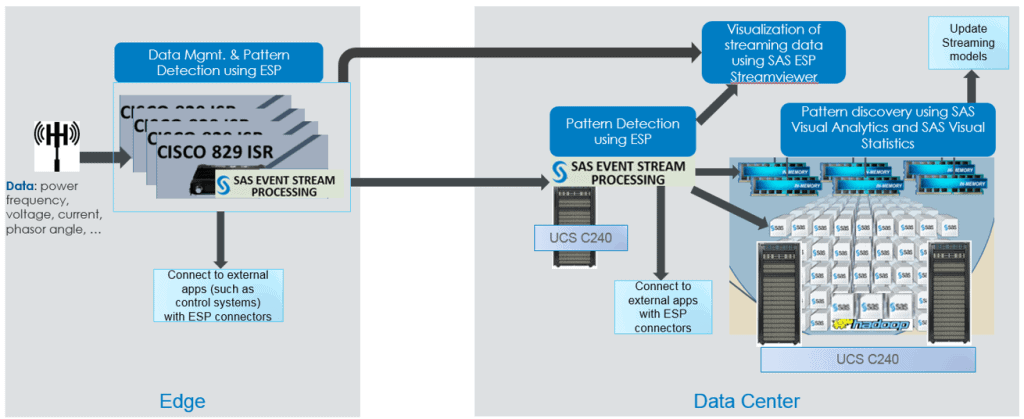Cisco and SAS plan to link their hardware and software for IoT analytics across an industrial network.
Cisco and analytics leader SAS have announced a new edge-to-enterprise analytics platform targeting Internet of Things use cases.
The companies tout the platform as the “industry’s first validated architecture for edge-to-enterprise IoT analytics.” The reference architecture combines Cisco’s networking, edge, and data center infrastructure with SAS’s capabilities in streaming and advanced analytics “in a foundation for cross-industry IoT implementations,” SAS stated in a press release.
Cisco long ago coined the term “fog computing” to describe the analysis of data on different points of a network, whether an edge device or data center.
“A key aspect of successful IoT applications is the ability to apply analytics at various points throughout the network … and to choose the type of analytics based on data volume, data velocity, latency and reporting requirements,” SAS stated. “Such multi-phase analytics allow us to detect unusual events as they occur” at edge devices while maintaining “aggregated views” across a collection of devices and systems.
In a blog post, Cisco’s Raghunath Nambiar said the Cisco-SAS architecture has three major pieces:
- Edge – Cisco 829 Industrial Integrated Services Routers, designed for deployment in harsh conditions, run SAS Event Stream Processing (ESP) software. “The combination enables collecting millions of events per second, filtering the data, analyzing it and detecting patterns of interest in real-time.” Cisco “Fog Director” software on servers simplifies the deployment of applications and models on edge routers.
- Transfer – Apache Kafka routes the data from edge devices to the enterprise, using Cisco rack or storage servers.
- Enterprise – Apache Hadoop handles data storage with Cisco UCS Integrated Infrastructue for Big Data and Analytics. SAS software stacks, which use in-memory processing for predictive analytics, include SAS LASR Analytics Server, SAS Visual Analytics, and SAS Visual Statistics. Meanwhile, Cisco UCS 6300 Fabric interconnects provide network connectivity, management and advanced monitoring. “The architecture can scale to thousands of servers on demand through the use of Cisco Nexus 9000 Series switches and the Cisco Application Centric Infrastructure (ACI),” Nambiar wrote.
He added that the joint solution is offered as a “Cisco Validated Design” for fast, predictable deployment at lower costs.
To validate the design, Cisco and SAS used sensor data from a smart grid containing millions of events. The data were ingested by the SAS Event Stream Processing software deployed inside the Cisco 829 routers. Results streamed to the ESP instance in the data center, which acts as the aggregator of data from several edge sources. To support deep advanced analytics and model building, the data are passed to SAS in-memory solutions on Hadoop. Improved models and additional analytic tasks can be deployed back out to the edge.
Use cases for the platform include smart electric grids or homes; connected cars; and smart manufacturing, including asset performance and predictive maintenance.






























